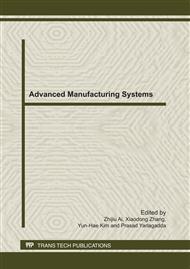p.80
p.84
p.88
p.92
p.96
p.105
p.113
p.118
p.124
Inhibitive Performance of 1,4/1,6-Bis(α-Alkyl Pyridinium ) Butane/Hexane Dibromide on A3 Steel
Abstract:
1,6-bis(α-alkyl pyridinium ) hexane dibromide was synthesized and confirmed by 1H NMR, 13C NMR, FT-IR and MS. The inhibitive effect of the gemini surfactants for A3 steel in 20% hydrochloric acid was evaluated by gravimetric measurement and electrochemical method. The results indicated that the inhibitive efficiency of the gemini surfactants was affected by the concentration, the length of alkyl chain and spacer in the gemini surfactants. The inhibition rate increased with concentration, the surfactants with four methylenes as spacer showed a slightly better anticorrosive performance than those with six methylenes, and the gemini surfactants with decyl chains exhibited the best inhibitive efficiency. The adsorption of these gemini surfactants on the surface of A3 steel was in accordance with Langmuir isotherm. The electrochemical experiment revealed that the gemini surfactants were mix-type inhibitors. The current density decreased noticeably with the concentration while the charge-transfer resistance increased. The pyridinium rings and positively charged nitrogen atoms in the gemini molecule adsorbed on A3 steel surface and the alkyl chains formed a hydrophobic layer by virtue of self-assembly property of surfactants. Therefore the corrosion of A3 steel was effectively inhibited by the gemini surfactants.
Info:
Periodical:
Pages:
96-102
Citation:
Online since:
September 2011
Authors:
Price:
Сopyright:
© 2011 Trans Tech Publications Ltd. All Rights Reserved
Share:
Citation:


